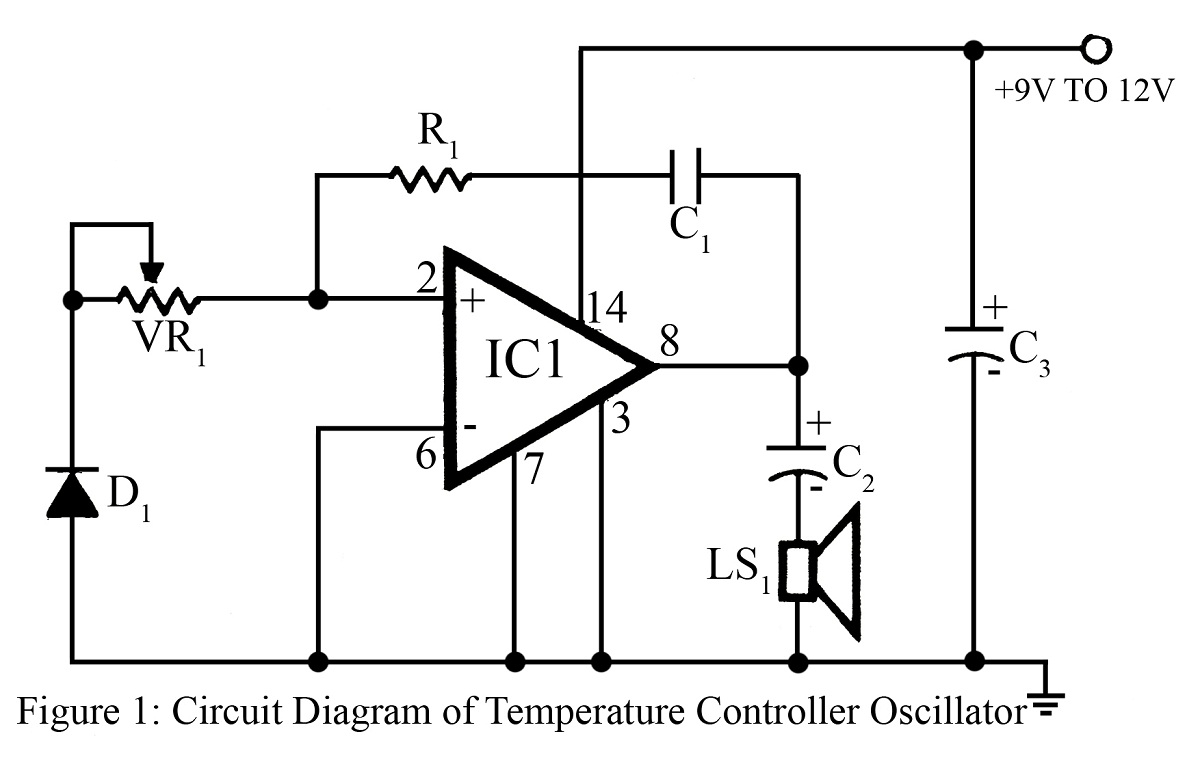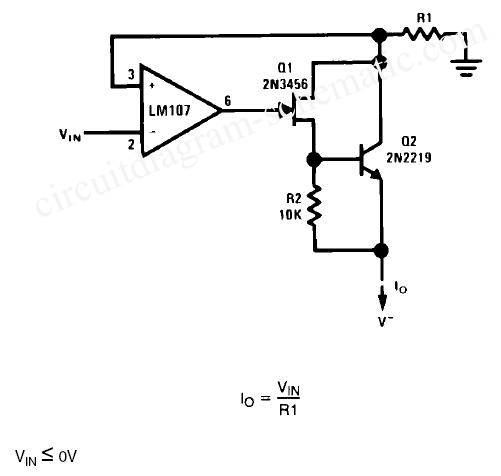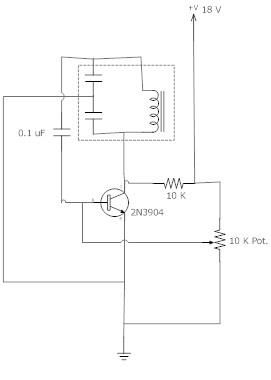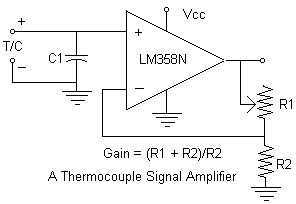
Simple ttl crystal oscillator
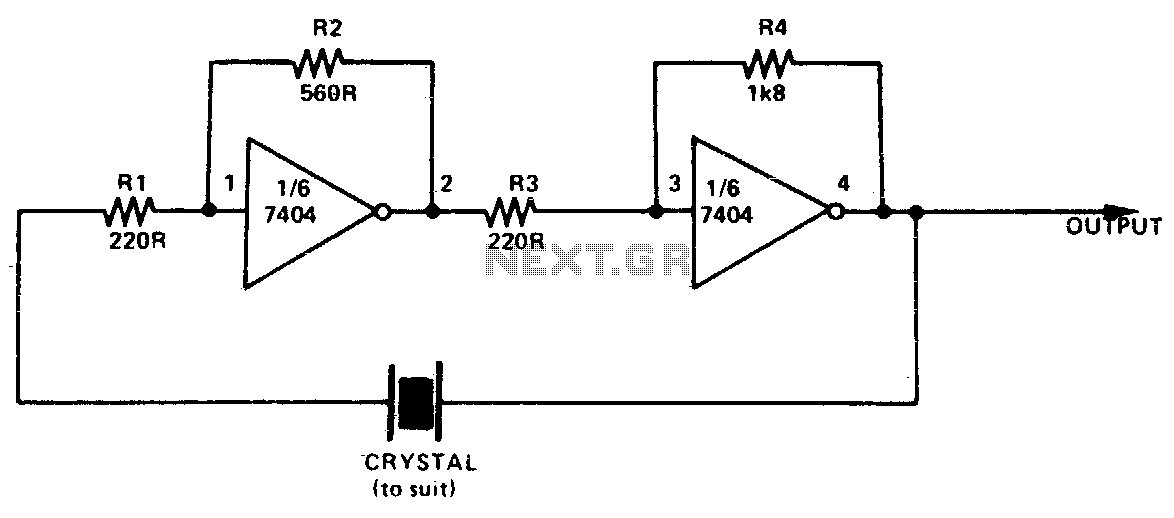
This simple and inexpensive crystal oscillator consists of one-third of a 7404 IC, four resistors, and a crystal. The inverters are biased into their linear regions by resistors R1 to R4, while the crystal provides the necessary feedback. Oscillation can only occur at the crystal's fundamental frequency.
The described crystal oscillator circuit utilizes a single inverter from a 7404 hex inverter IC, which contains six independent inverters. In this configuration, the inverter operates in a linear region, facilitated by the resistors R1 to R4 that set the bias point. The resistors are strategically placed to ensure that the inverter remains in a state where it can amplify the oscillations generated by the crystal.
The crystal used in this circuit is critical as it determines the frequency of oscillation. The fundamental frequency of the crystal is defined by its physical characteristics, which include its cut, size, and material. When the circuit is powered, the crystal resonates at its fundamental frequency, which is the frequency at which it naturally oscillates. This resonance creates a feedback loop that sustains oscillation, allowing the inverter to switch states and produce a square wave output.
The output frequency of the oscillator circuit is primarily determined by the characteristics of the crystal and, to a lesser extent, the values of the resistors. The circuit can be tuned for stability and performance by adjusting the resistor values, although the crystal itself will predominantly dictate the oscillation frequency. This simplicity and low component count make the crystal oscillator an ideal choice for applications requiring a stable clock signal, such as in microcontroller timing circuits, frequency generation, and signal processing tasks.
Due to its low cost and ease of implementation, this crystal oscillator circuit is widely used in various electronic devices and systems, providing a reliable frequency source for digital applications.This simple and cheap crystal oscillator comprises one third of a 7404, four resistors and a crystal. The inverters are biased into their linear regions by R1 to R4, andthe crystal provides the feedback Oscillation can only occur at the crystals fundamental frequency.
The described crystal oscillator circuit utilizes a single inverter from a 7404 hex inverter IC, which contains six independent inverters. In this configuration, the inverter operates in a linear region, facilitated by the resistors R1 to R4 that set the bias point. The resistors are strategically placed to ensure that the inverter remains in a state where it can amplify the oscillations generated by the crystal.
The crystal used in this circuit is critical as it determines the frequency of oscillation. The fundamental frequency of the crystal is defined by its physical characteristics, which include its cut, size, and material. When the circuit is powered, the crystal resonates at its fundamental frequency, which is the frequency at which it naturally oscillates. This resonance creates a feedback loop that sustains oscillation, allowing the inverter to switch states and produce a square wave output.
The output frequency of the oscillator circuit is primarily determined by the characteristics of the crystal and, to a lesser extent, the values of the resistors. The circuit can be tuned for stability and performance by adjusting the resistor values, although the crystal itself will predominantly dictate the oscillation frequency. This simplicity and low component count make the crystal oscillator an ideal choice for applications requiring a stable clock signal, such as in microcontroller timing circuits, frequency generation, and signal processing tasks.
Due to its low cost and ease of implementation, this crystal oscillator circuit is widely used in various electronic devices and systems, providing a reliable frequency source for digital applications.This simple and cheap crystal oscillator comprises one third of a 7404, four resistors and a crystal. The inverters are biased into their linear regions by R1 to R4, andthe crystal provides the feedback Oscillation can only occur at the crystals fundamental frequency.
